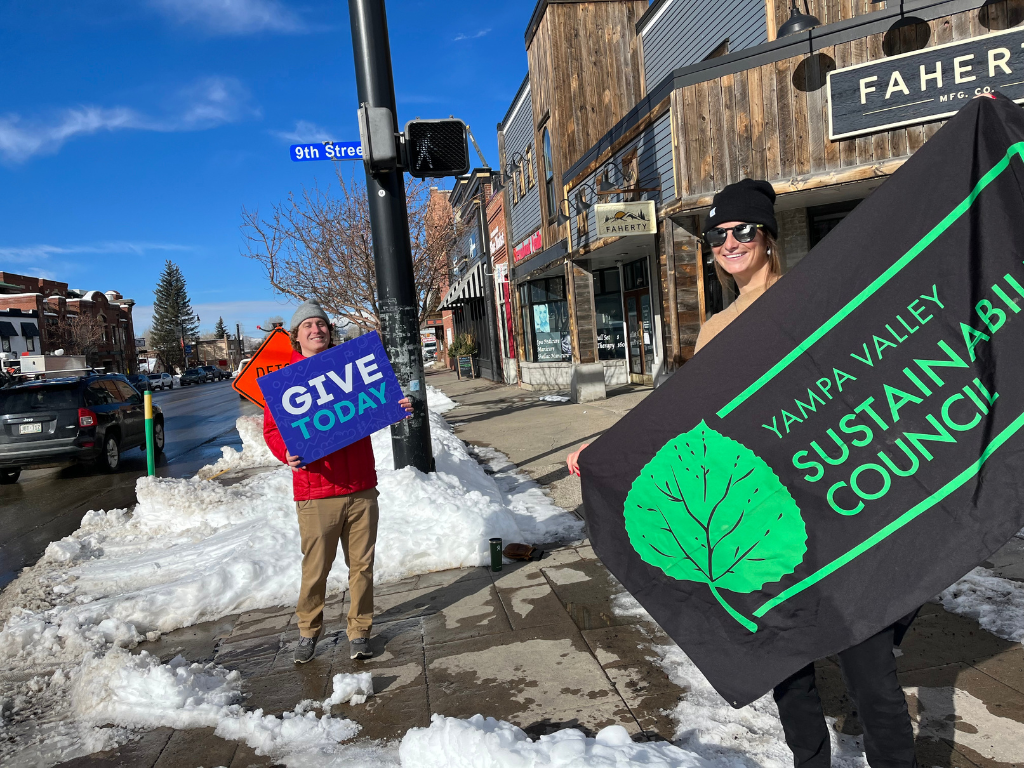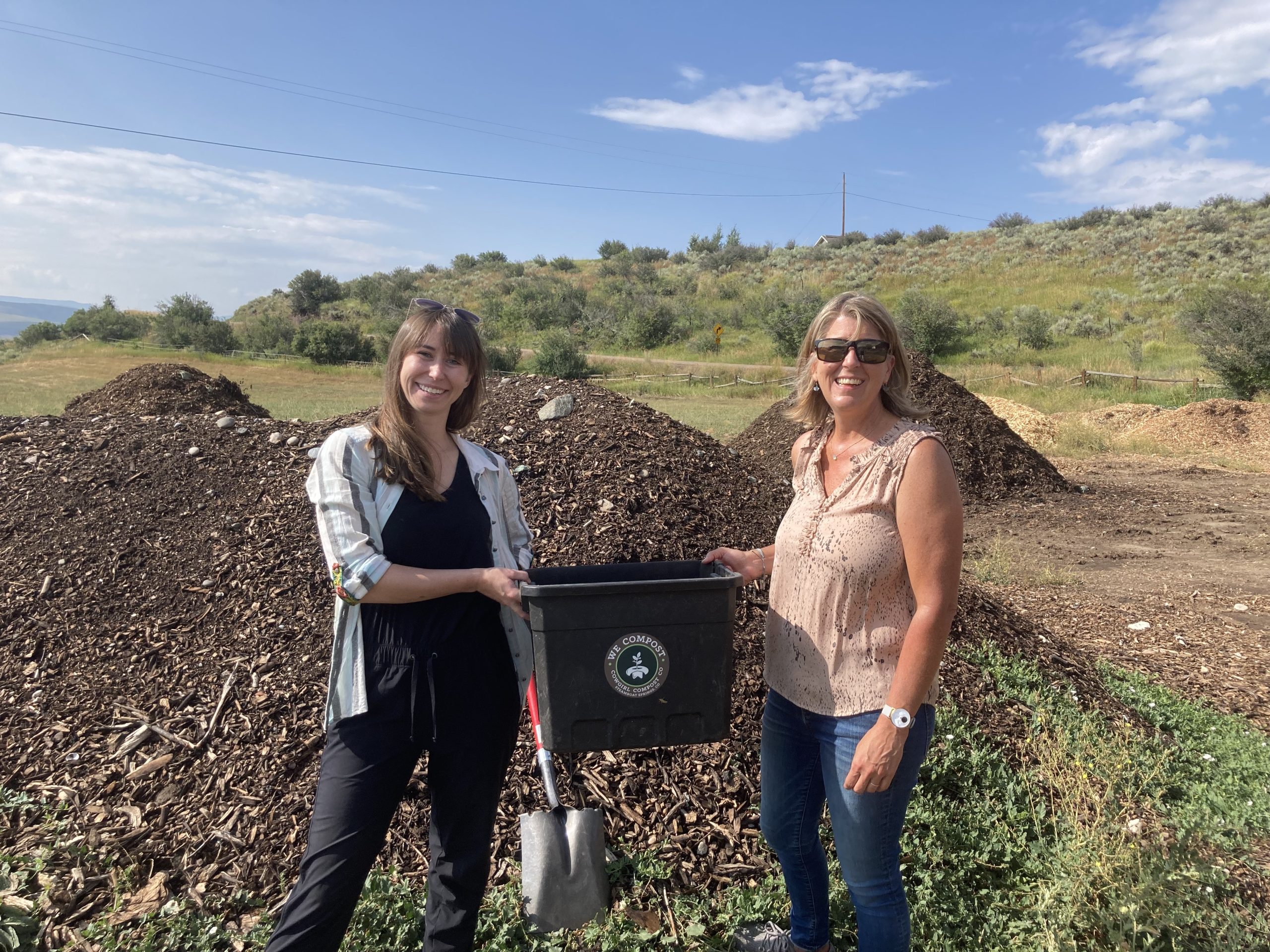FEBRUARY 14, 2014 BY
It was a typical February day at Soda Creek Elementary; we walked in at 1pm and Cindy Gantick’s fifth grade class was having what appeared to be a winter picnic in the common area upstairs outside their room. It was an eat-while-get-it-done session, as their four committees of the Leadership Group were giving status reports, but one group in particular was eager to give us theirs. Only three of six members were present, but the entire class was interested in their report – was it their mysterious name? The super environmental cause? The build up of three years in the making? Who knows; I just know that the Energy Ninjas are infamous, and meeting three was a true honor.
Just one week ago we were in the same common area, all five YVSC staff members talking to the entire grades individually, K through 5, reminding them that February is a very important month in the school district. It heralds the Two Weeks to Take Charge Energy Reduction, and while the winning school of five competing wins the coveted Energy Cup – now proudly displayed at Soda Creek since their win last year – all of the schools truly win; whatever energy is saved during the challenge is money not spent, funds that can go into other needs for the school.
For me, not a parent myself, I don’t get the daily entertainment of the what-comes-out-of-their-mouth game, so hearing the students speak about why the Energy Challenge is important to them was a laughable and also tear-jerking experience. Where does energy come from? “The wall,” one kindergartener told us. Why do we do the Energy Challenge? “Because polar bears are losing their homes,” one first grader told us. Sniff.
We asked a lot of questions, and answered a lot too, but one in particular was a staple during our repeating 15-minute speech over two days: “Do you know about the Energy Ninjas?” Always, a resounding yes. “Have you seen the Energy Ninjas?” Mostly, a resounding no. Well of course, we said, they’re ninjas.
The requirements are simple, students must be in fifth grade to be a ninja, and sprinkle in a little love for the environment, some type-A personality in-the-making, and some very sneaky abilities, and you’ve got a ninja.
Eager to divulge their secrets, the three ninjas we met from Gantick’s class went through their daily mission with us. Jocelyn McPharland, age ten, no nonsense, and full of idealism, filled us in on what’s in the ninja’s mission bag: 1. A pocket full of green report slips – this is what the ninjas leave in the rooms after their stealthy mission to tell the class “good job for turning off your lights when you weren’t here.” Also used as suggestion slips, as Jocelyn told us, “they’re not really bad slips, you just write down what they should improve upon next time.” 2. Check lists – they’re looking for lights off, sleeping computers, smartboards and TVs off, blinds closed, water off, and windows shut. 3. Designation – each student covers a grade so at least six ninjas are needed for Soda Creek Elementary to cover K through 5. “I’ve always liked being as green as I can because I like to help the Earth,” Jocelyn tells me when I ask why she’s a ninja. Sniff sniff.
Alan Duty, age ten, with serious ninja skills, showed us what it takes to be a ninja. First we head to first of the two highly visible graphs where the ninjas check off boxes for good energy conservation behavior; when a class room gets a good slip, they also get a box colored in, and the classroom with the most boxes filled in gets a prize at the end of the year – incentivizing the classrooms to reduce their energy use. “I liked the energy ninja notes last year, seeing who did good… so I wanted to be a ninja this year,” Alan proudly states.
“Go be a ninja,” one of his classmates tells Alan, so off we go to Alan’s watch: the kindergarten pod. The first room is dark and empty. Alan drops a blank green slip on the desk, “If nothing’s on here,” he points to the slip, “then it means they were good.” Mrs. Osbourn is working at her desk alone in the dim room, and she tells Alan the kids love the notes. The kindergartners exclaim, “The ninjas were here!” when they see a note left behind. The next room we visit the kids are working in groups, and as Alan comes back out from leaving his note Jocelyn tells us, “nobody noticed him!” Yes, that’s what it takes to be a stealthy ninja.
The other ninjas include Ryan Hansen, Jaxson Fryer, Elsa Theut, and Jada Brown, who each cover one of the other grades.
The ninjas are keenly focused during the Energy Challenge in February but truly they’re working their magic all year. Last year Soda Creek Elementary won the Energy Cup, and reduced their energy consumption by $1400 during the challenge weeks alone. Each schools’ electricity use is measured against the average of its last three years of consumption, so it’s a fair challenge, as not all schools are the same size, efficiency, etc. This year Soda Creek and Strawberry Park Elementaries, and Steamboat Springs Middle School, and the Steamboat Springs and Yampa Valley High Schools are competing to reduce their energy and save their school some bucks.
Stay tuned until April for the results, and until then, if you see a ninja, give them a high-five. Learn more about the Energy Challenge www.yvsc.org/energychallenge.











